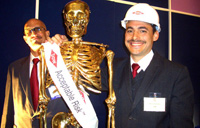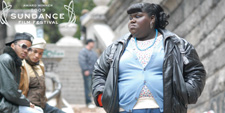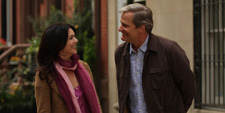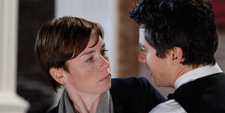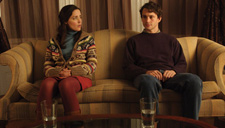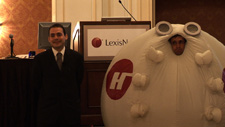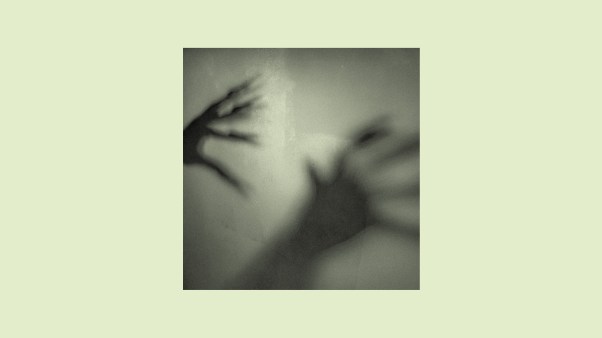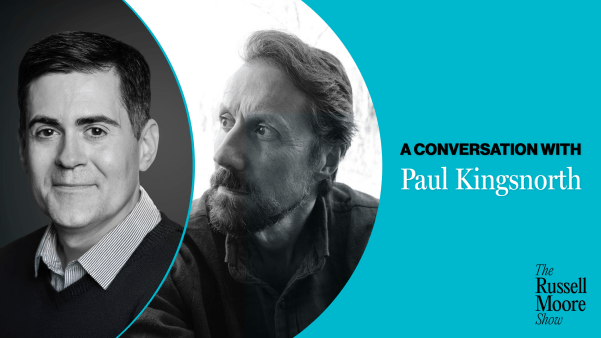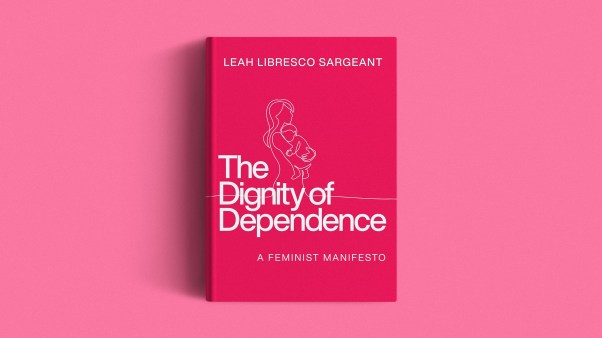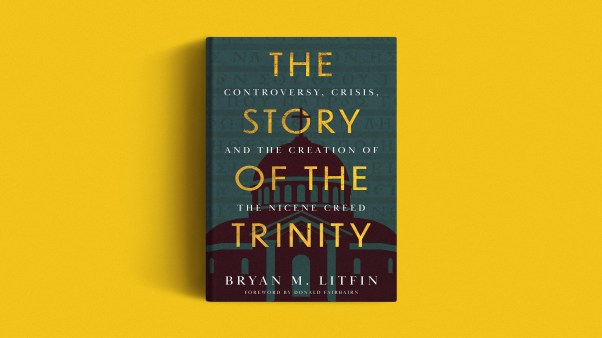Sundance Goes Hopeful
What our Sundance correspondent learned after a week—and 35 movies—at the independent film festival.Posted 01/26/09PARK CITY, Utah—After 18 features, 17 shorts, and loads of conversations, my 2009 Sundance experience has come to a close.
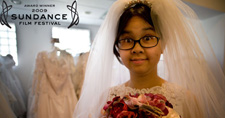
The emotions were vast. I laughed throughout films such as Paper Heart. I cried during Taking Chance. I learned via Reporter. And I was moved to my feet after Push. On Sunday’s plane ride home, I reflected on my Sundance experience. Let me wrap up the journey via a few phrases that left their mark:
“So, what did you think?” Whether in class, a restaurant, or a crammed bus, it was hard to escape the most repeated question at Sundance: “So, what did you think?” The post-film conversations are not only some of my favorite memories; they are what gave space for transformation.
“Support independent film.” While Sundance has championed indie filmmakers for over 25 years, one must ask: What really is an independent film? Should a film receive such a label when HBO has backed it from Day 1? Is it independent when a film gets developed at the Sundance Institute and “happens” to find its way into competition? While many would claim that anything made outside the big five studios warrants such a label, others wonder if the term needs redefining. I am for the latter.

“All the News We Hope to Print.” While we stood in line for The Yes Men Fix the World, the directors passed out free copies of The New York Times to occupy our time. The front page headline read: “IRAQ WAR ENDS.” Wha? Am I that removed from the rest of the world that I have missed such news? As I scrolled down the rest of the page, subtitles such as “Maximum Wage Law Succeeds” and “Treasury Announces ‘True Cost’ Tax Plan” prompted serious suspicion. Then I noticed a small disclaimer in the top-left corner: “All the News We Hope to Print.” How (theologically) profound.
“Moving on to other things.” I can count on two fingers the number of post-film Q&As that did not reference Obama and the new administration. During the welcome at one of the premieres, one of the senior programmers commented: “Now that we have the new presidency behind us, we can now move on to other things.” There is little doubt that the election played a crucial role in moving Sundance from criticism to hope. While the difficult subject matter was certainly present, there was a consistent layer of optimism from those who are often deemed cynical. Speaking of hope …
“I’m a raging atheist.” While I was sitting in one of the free internet lounges, the director for one of the shorts, Rite, happened to be in the room. I overheard her offer a free screener to someone in the room. And as I turned as if to suggest “How about me?”, she inquired if I was writing for a publication. When I told her I was writing for Christianity Today, she shouted, “That’s great! I’m a raging atheist!” We talked for a while, she gave her blessing of my presence at the festival, and then handed me her card. What does this say about the often touted secular/Christian divide? When a “raging atheist” is extending her hand to the Christian community, I think we have something to learn. I know I do.

“This Story Transcends.” Winner of the U.S. Dramatic Competition award and the Grand Jury Winner, Push: Based on the Novel By Saphhire follows the life of Precious Jones (Gabourey Sidibe)—an overweight high school girl from Harlem traumatized by her home life. After becoming pregnant from her father for the second time and daily verbal beatings from her mother, the nature of humanity comes into question. But as Precious maneuvers her way through the difficulties of inner-city life, the audience is drawn to her beauty that transcends physical features and circumstance. Director Lee Daniels made Push for the African-American community, but as the predominantly white screening audience erupted in an extended standing ovation, Daniels remarked in his amazement that the story transcends racial and economic diversity—consistent themes throughout Sundance. A must see.
As these Sundance reports come to a close, I cannot escape our initial question (see the Day 1 entry below): Who is the prophet? Through imaginative and captivating storytelling, I have little doubt that today’s “seemingly” independent filmmakers are speaking something into our culture. And when themes of reconciliation, beauty, and hope are both prominent and consistent, one can only wonder if the Spirit is not intricately involved. But, is this possible? Does the Spirit use film as a prophetic medium—even at the “secular” Sundance festival?
While I am certain most would give space to such theological “possibilities,” I am less convinced we operate with such expectancy. For me, Sundance went a long way toward changing that.
DAY 5Spirituality and Art
Two films at Sundance, Arlen Faber and Art & Copy, force the viewer to contemplate dual influences in our lives—God and advertising.Posted 01/23/09PARK CITY, Utah—One of the more overtly “spiritual” films at Sundance this year is Arlen Faber. This romantic comedy follows the life of best-selling author Arlen Faber (Jeff Daniels) and his “Purpose-Driven-Like” book, Meand God—a conversation between Arlen and God. Arlen asked the questions. God (might have) provided the answers. Arlen writes. Arlen achieves enormous success. God seemingly disappears. Arlen avoids society.

Director John Hindman invites the audience into an opportunity that most anyone would dream of—an encounter with the divine. What questions would we ask? How would we respond?
One of the most unique aspects of Sundance (and most film festivals) is the ability to hear from its directors and writers. When asked why he wanted to cover spiritual subject matter, Hindman suggested that he wanted to address the “something” under the surface that we all seem to be scratching at. At the same time, it becomes a commentary on those who claim to fully understand this mysterious reality.
Hindman admits that he wanted to bring the person with these presumptions (i.e. Arlen) to his knees—an idea that he literally follows through with.
What does this say about the way our culture perceives evangelicals? What does this say about the church’s posture? What would happen if we let go of the need to provide answers, but instead practiced the art of listening to the questions?
All questions that I continue to consider.

I’ve been taking notes throughout each film I see here, and by the end of Art & Copy, I had six pages. In my favorite documentary here to date, director Doug Pray provides a wide and deep look into the advertising industry and its impact on our culture. However, while most would assume a documentary with such a subject matter would bash the practice and its negative impact on society, Pray chooses to bless it. The story is not about companies. It’s not about product. And it’s ultimately not even about culture’s response. It’s about artists and their little (or big) window to the world.
Pray humanizes the industry by capturing the angst behind the artists that have created some of the greatest and influential ad campaigns we’ve ever seen. Campaigns such as “Just Do It” and “Got Milk?” are ultimately the creative expressions of a few individuals. They are not trying to become rich, or merely to peddle a product. They are people who see things which have become obscured and bring them to the surface. These artists have the unique ability to see something that is true, however benign or substantive, and begin their art with that truth.
As crazy as it might seem, I left appreciative of the spaces that have infiltrated our televisions and occupied our billboards. Sure, many abuse such spaces. Sure, the abundance has its negative effects. But what would happen if we shifted our perspective? What would happen if instead of copy, we saw expression? Instead of product, we saw art?
I am sure we will all have plenty of opportunities to ponder today. According to Art & Copy, about 5,000 opportunities. Every day.
DAY 4Getting My Self out of the Way
Through thought-provoking movies like Cold Souls and others at Sundance, and with assists from my prof and C. S. Lewis, I’m learning to “surrender” when it comes to art appreciation.Posted 01/22/09PARK CITY, Utah—Wednesday was the most time intensive day I will experience at Sundance. We had class all morning (more on that in a moment) and then I was able to catch three wonderful films in the afternoon and evening: Cold Souls, Paper Heart Sin Nombre

Cold Souls
The absurdity of such an idea hits home when the audience is confronted with whether they would entertain an option to remove their own burdens. As Charlie Kaufman explored in Eternal Sunshine of the Spotless Mind, Barthes asks whether or not “numbness” is a worthy choice. What are we losing? Does that which we have labeled “the soul” contain the essence of what it means to be human?
Between the conversations of Cold Souls and Sin Nombre, there’s a prominent question I wrestle with on a personal level. What really is the difference between experiencing a film at Sundance versus my local theater and/or living room? Is there a difference? Is it the atmosphere? Does waiting in line for over four hours immediately make a film better? (Yes, I waited this long for Brief Interviews with Hideous Men.)

Then it hit me.
This is my last class as a theology student. Through partnerships between Fuller’s Brehm Center and its Colorado Regional Site (which has championed this class at Sundance), I have had the opportunity to take multiple classes surrounding theology, film, and the arts. Under the leadership of Craig Detweiler and Rob Johnston, co-directors of the Brehm Center’s Reel Spirituality Institute, I have been trained in what might best be called “public theology” and/or “interpretive leadership.”
The difference (for me) is not Sundance. Sure, the interaction with filmmakers and long wait lines affects the overall experience, but these are mere peripherals. The difference is not even the films themselves. Personally, what has shifted is how I now walk into a film—my mindset as I enter the theater.
Here at Sundance, Detweiler acts as our tour guide. Before we dove into our marathon of films, he invited us to reflect on C.S. Lewis’ words out of An Experiment in Criticism
“The first demand any work of any art makes upon us is surrender. Look. Listen. Receive. Get yourself out of the way. (There is no good asking first whether the work before you deserves such a surrender, for until you have surrendered you cannot possibly find out..)”
What would happen if we attempted to remove ourselves from the art we experience? From the people we encounter? Sure, such a task is unavoidable on many levels, but should this negate any attempt? If I have learned anything in my theological journeys, it is that God is the one revealing. Not me.
DAY 3To Be Loved? Or to Love?
That is the question of the day, posed by two Sundance films about “hideous men” and a person with Asperger’s syndrome.Posted 01/21/09PARK CITY, Utah—It is Day 3 on this Sundance journey and many have inquired exactly how the festival works. Here’s a general landscape:
This year, more than 9,000 films were submitted to Sundance. Only 118 films were selected (not including shorts); however, only 64 are up for “competition,” which falls into four general categories: U.S. Documentary, U.S. Dramatic, World Cinema Documentary, and World Cinema. Because every film at Sundance must be a “premiere,” most show up without distribution, only hoping that someone picks it up.
In the U.S. Dramatic Competition, two favorites come to the fore: Adam and Brief Interviews with Hideous Men. Interestingly, both share similar themes and questions.

Brief Interviews with Hideous Men
Adam

The question is thrown back to us: How do we see the world? As Christians, do we avoid dealing with reality? I am reminded of Christ’s interaction with his disciples in Matthew 13, and his warning about having eyes that don’t see and ears that don’t hear. Are we missing God’s ultimate reality because of our cultural tendencies to see what we want to see? Hear what we want to hear?
In the end, both Brief Interviews and Adam deal with the topics of truth and love; however, come at both via different directions. The former tackles truth through how to speak it, the latter how to see it. While Brief Interviews explores what it means to be truly loved, Adam challenges the notion that being loved is our greatest task, instead inviting the audience to explore what it means to simply be loving.
So, have these films been “picked up”? Will you get a chance to see them? I can only confirm that Adam was picked up yesterday by Fox Searchlight and can only assume that the deals for Brief Interviews with Hideous Men are in the works.
DAY 2Obama and the Spirit of the Dance
Fittingly, on the eve of an historic inauguration, two films about racial relations stir the discussion even more—and a bunch of theology students join the conversation.Posted 01/20/09PARK CITY, Utah—It is inauguration day and there is a definite “Obama anticipation” in the streets at Sundance. Signs are tacked on store fronts inviting event goers to step in to watch history unfold. Filmmakers who received the Tuesday morning slot were sweating. And bus conversations interweave the new administration with the films of the day.
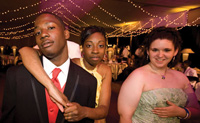
While today’s historic event certainly marks a shift in our nation’s posture toward racial inequality, independent filmmakers don’t want to assume our racial struggles are over. Prom Night in Mississippi has created quite a buzz for documenting the first-ever racially integrated prom at Charleston (MS) High School—in 2008. Academy Award winner Morgan Freeman, a Mississippi resident, offered to fund the prom in 1997 under one condition: It had to be fully integrated. He was ignored. Freeman made the offer again last year, and this time the school took him up on the offer.
Toe to Toe

One of the most intriguing aspects of Toe to Toe is the statistic that inspired it—that 87% of interracial friendships for American teenagers end at the age of 14. The film prompted memories of my own childhood and some of the closest friendships that eventually ceased. Is this really a commentary on children or the adults that lay the constructs? Is the filmmaker the prophet? Do these realities speak to the Church as well?
Preceding the screening, Toe to Toe director Emily Abt said, “I hope you like it. But if you don’t, I at least hope you talk about it.”
And this is the beauty of Sundance, where every director and writer begs for dialogue to surround their film. But I am less convinced we are trained as film viewers (and Christians) to truly discuss film. We tend to walk into a movie with our minds already formed, or simply measure a film by its mere “entertainment” value.
Enter the Windrider Film Forum.
Windrider was started by John and Ed Priddy (of Priddy Brothers Entertainment) in order to provide space for just this: continued conversation. Through the generosity and partnership of the Mountain Vineyard Church in downtown Park City, theology and film students alongside filmmakers are given a space to converge, right in the heart of Sundance.
When Christians hear that a bunch of theology students have set up shop at one of the world’s most secular or “liberal” venues, they applaud the attempts to “bring God” to such a pagan culture. But that’s not what Windrider is about. In his book How (Not) to Speak of God, Peter Rollins writes, “Instead of bringing God to unreached peoples and unreached places, I find countless missionaries who say that while this was what they once thought, time and again they find that these unreached places are the very sites where they must go to find God and to be reached.”
The Windrider name is inspired by the Hebraic word ruach, which means “spirit.” And this forum is simply an invitation to ride the Spirit that blows. And having experienced the festival scene and Windrider multiple times, we have no intentions of “bringing God” to Sundance—for we are certain he is already here.
DAY 1It’s the Economy, Stupid
As Sundance begins, CT Movies correspondent Bob Davidson starts watching lots of movies and discovers two prominent themes—the economy and change.Posted 01/19/09PARK CITY, Utah—There are few places in the world that you can leave a theater at midnight only to return for another movie before sunrise. Enter the Sundance Film Festival. Known for its advocacy for the independent artist and the occasional celebrity sighting, Sundance has been welcoming film fanatics for 25 years to not only experience film, but to interact with its creators. This week, I plan to do both.

I am a theology student, Windrider Forum participant (more on this tomorrow), and film lover. My first trip to Sundance was in 2007, where an encounter with one film ( Save Me
It did not take long to discover that couple of themes stand prominent at the 2009 festival: the economy and change. After four films in 24 hours, two documentaries have kept my viewing companion (Rob) and me in consistent conversation. Let’s Make Money looks intently at the neo-liberal methods that have monopolized the world’s economic structure. By following the actual flow of currency, director Erwin Wagenhofer’s unveils the myths of a free market system and just who is “making money” at the expense of the poor. While the current economic crisis is shaking the consumerism mentality, Wagenhofer and crew believe it is not enough. We continue to bail out in order to stay “in it.”

The Yes Men Fix the World tackles similar economic systems, but by choosing absurdity as its medium. Andy Bichlbaum and Mike Bonanno (a.k.a. The Yes Men) are two pranksters who wonder if the only way to open the eyes to corporate injustice is to take on the identity of the corporation themselves. After setting up fake websites in order to attract speaking engagements, Mike and Andy impersonate powerhouse execs at various industry conferences in order to offer practical alternatives to current paradigms—a reality that “could be.” What would it look like if companies thought about environmental impact before production? If corporations actually admitted when they were wrong? If wars were not dictated by consumerism? If the value of the dollar was not the same as human life?
But are these not the same injustices that Christ spoke against? Are these not the questions the church should be asking?
And it is here at Sundance of all places that theology and film meet. In his book, The Prophetic Imagination, Walter Brueggemann not only reminds the church that it is just as encapsulated in thoughtless consumerism as the rest of the world, he asserts that it is the prophet’s role to call us out of such consciousness, and energize the culture. After the film, the room was clearly energized. During the following Q&A, people asked things like “What can I do?” and “How can I get involved in this kind of change?”
The question that strikes me here is: Who is the prophet? The church? Or the filmmaker?
Bob Davidson, a Fuller Theological Seminary student pursuing his Masters of Theology, Bob is co-founder of Project rednoW, a theological conversation via the art of wonder.
Copyright © 2009 Christianity Today. Click for reprint information.


